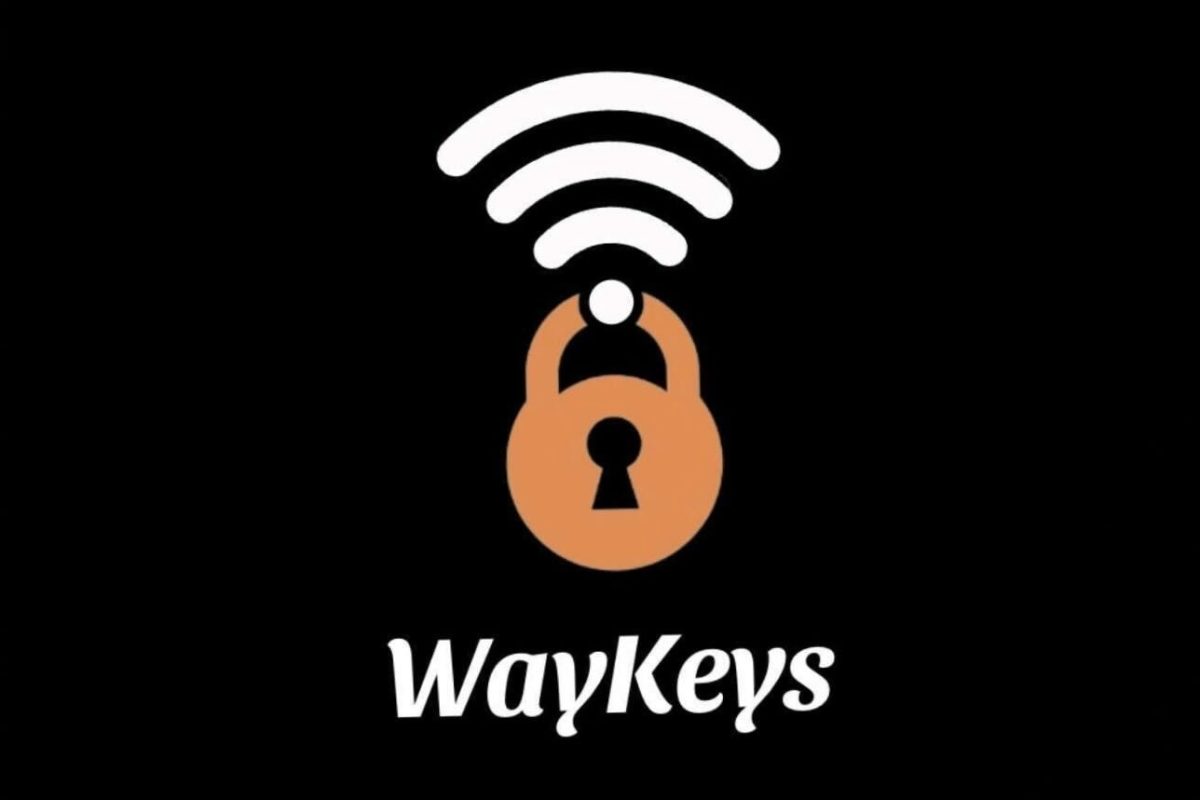This year, Wayland High School implemented the use of keycards to enter each building on WHS’ campus. Although the keycards are meant to provide an improvement in regards to the school’s security, the physical keycards and process of scanning into each building have received mixed feedback from students. Some students have expressed that the keycards can be frustrating, because if a student forgets or loses their keycard, they will be unable to unlock the doors to WHS’ buildings. To attempt to solve this inconvenience, a WHS business group in the Entrepreneurship and Business Management (EBM) class created “WayKeys.”
The WayKeys group consists of juniors Michael Keenan, Peyton Moran, Benam Hessamfar, Graham Heinrich, Desi Ward and Bowen Morrison. The idea for WayKeys came to Moran, WayKeys’ Chief Financial Officer (CFO), while he was trying to scan into the school.
“[The idea for WayKeys] first came to me when I was coming to school and thinking about EBM ideas,” Moran said. “I had a bunch of things in my hand–coffee, my bag and my sports stuff–and I wanted a more efficient way to get into the school than my physical keycard.”
Keenan, WayKeys’ Chief Executive Officer (CEO), explained that WayKeys was created to make getting into school more convenient. The idea that Way Keys proposed was to create a digital copy of the keycards to transfer onto students’ phone in order to scan into the building.
The group’s original idea was to create a key fob, but due to some difficulties, they pivoted to a digital keycard model. The group believes that the digital keycard will reach a larger audience, and that the key fob would have primarily been used by students who drive to school. The digital keycard will be available in Apple Wallet, which will extend access to all students with an iPhone. The digital keycard can be be pre-ordered via a direct message (DM) to the WayKeys Instagram account.
“We will sell our pre-orders at $5 for the first 50 orders, so get it while it’s cheap,” Keenan said. “As it becomes popular, everyone will want one, and as it spreads, it will be $8.”
Although WayKeys executives are quickly approaching product launch, to get there, they relied on a long, guided procedure. The EBM class is structured around the process of starting a business. Each semester is dedicated to a certain step of the process. During the first semester, students are taught how to come up with an idea for their business.
“[EBM students] identify opportunities for products by looking around and seeing where problems exist, and then trying to come up with product solutions,” EBM teacher Fred Lehmann said.
When the second semester begins, the best ideas are chosen by the teacher. After, students group into business teams, conduct more involved research on their idea and create a pitch. EBM businesses will then operate and work on their products until the end of the school year. However, over the course of this process, EBM students sometimes experience similar issues that professional entrepreneurs do.
“We are having trouble because we need to demo [our product] first and the company we are working with still has to send the demo to our head of tech so we can review it and make sure it all works soundly,” Keenan said.
EBM students sometimes encounter bumps that interrupt their plans, but by learning from their mistakes, students are taught to adapt to situations. For WayKeys, that meant engaging in more communication.
“We had to talk to the security team to make sure that [our product] was safe for the students,” Moran said. “We had to change our product a couple times, but we’re in the works of getting it approved right now.”
After creating and building their business vision statement–which states their purpose, their goals and their products–EBM students learn how to generate money. All of the money that the businesses in EBM receive are donated to an organization of the group’s choice. For example, WayKeys’ funds will be donated to an Alzheimer’s research foundation.
“For some, [making money] is finding outside investment where they need to sell shares of their company to investors in order to raise money,” Lehmann said. “It can also be through selling pre-orders of their product so that customers are actually funding their business.”
By creating an identity and vision for their companies, students can find ways to profit off of the products they create by presenting themselves to the market. By understanding markets and co-workers, all while navigating bumps in the road, Lehmann says that EBM students can gain valuable skills and build character. The students who created WayKeys believe that they have been able to create a successful business through EBM, and are working to release their product shortly.
“[The EBM class] really helps kids appreciate the challenges of identifying a product idea that is actually feasible to produce,” Lehmann said. “A student that takes EBM is going to be more resilient to those challenges, [whether] they choose to start a business in the future or just any kind of job that they undertake.”





























